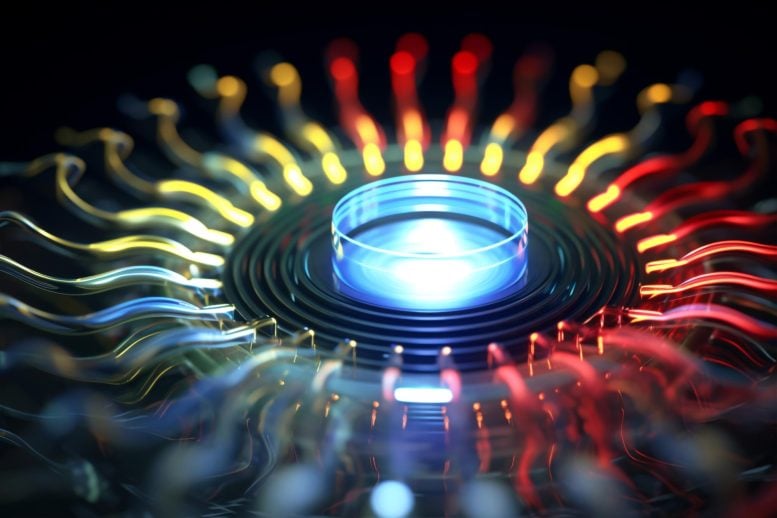Scientists Confirm a Groundbreaking Physics Phenomenon in Spintronics

A recent study has uncovered the "orbital Hall effect," a phenomenon that could greatly enhance data storage in upcoming computer devices. This discovery, which involves the creation of electricity by the orbital movement of electrons, promises potential improvements in the field of spintronics, leading to more effective, quicker, and dependable magnetic materials.
Researchers have employed a new method to verify a hitherto undetected physics phenomenon that holds potential to enhance data storage in the forthcoming generation of computer devices.
Advanced computers and satellites use Spintronic memories that harness the magnetic states created by the intrinsic angular momentum of electrons for data storage and retrieval. The physical movement of an electron's spin results in a magnetic current. This “spin Hall effect,” is instrumental for magnetic materials across various different fields, from low-power electronics to fundamental quantum mechanics.
Scientists recently discovered that electrons can also generate electricity through another kind of movement: orbital angular momentum, similar to how Earth revolves around the sun. This is referred to as the "orbital Hall effect," stated Roland Kawakami, the study's co-author and a professor in physics at The Ohio State University.
Theorists projected that using light transition metals – materials with weak spin Hall currents – it would be easier to spot magnetic currents generated by the orbital Hall effect flowing alongside them. However, direct detection of such a thing has been a challenge until now. A method to observe the effect was showcased in the study led by Igor Lyalin, a graduate student in physics and published in Physical Review Letters.
Kawakami said, “There’s been continuous discovery of various Hall effects over the decades. But the concept of orbital currents is a new one. They mix with spin currents in typical heavy metals making it difficult to distinguish them.”
Kawakami's team demonstrated the orbital Hall effect by reflecting polarized light, particularly a laser, onto various thin films of the light metal chromium to examine the metal's atoms for a possible build-up of orbital angular momentum. After nearly a year of meticulous measurements, researchers were able to detect a distinct magneto-optical signal showing that electrons accumulated at one end of the film displayed strong orbital Hall effect traits.
This successful detection could have significant implications for future spintronics applications, according to Kawakami.
“The notion of spintronics has been in existence for roughly 25 years, and while it's been quite beneficial for various memory applications, there are attempts to advance it further. One of the biggest objectives of the field now is to decrease the amount of energy used, as that's the restricting factor for enhancing performance” he said.
Reducing the total amount of energy required for future magnetic materials to operate properly could potentially enable lower power consumption, higher speeds, and higher reliability, as well as help to extend the technology’s lifespan. Using orbital currents in place of spin currents could possibly save both time and money in the long run, according to Kawakami.
The researchers say that this investigation establishes a way to learn more about how these abnormal physics phenomena arise in other types of metals. They want to continue investigating the intricate relationship between spin Hall effects and orbital Hall effects.
The study titled "Magneto-Optical Detection of the Orbital Hall Effect in Chromium” by Igor Lyalin, Sanaz Alikhah, Marco Berritta, Peter M. Oppeneer and Roland K. Kawakami, was published in the Physical Review Letters on October 11, 2023. Co-authors included Sanaz Alikhah and Peter M. Oppeneer from Uppsala University and Marco Berritta from both Uppsala University and the University of Exeter. This research was supported by the National Science Foundation, the Swedish Research Council, the Swedish National Infrastructure for Computing, and the K. and A. Wallenberg Foundation.




